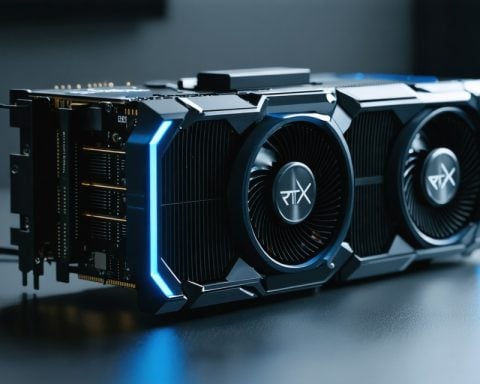AMD, a leading semiconductor company, released its Q2 2024 earnings report, showcasing robust growth in various segments while experiencing a significant decline in gaming revenue. The company’s gaming business witnessed a 59% drop in revenue compared to the previous year.
During the earnings call, it was highlighted that this decline in gaming revenues primarily resulted from a decrease in semi-custom revenue, including the Radeon GPU business and the production of semi-custom chips for Microsoft’s Xbox Series X/S consoles and Sony’s PlayStation 5 consoles.
In contrast, AMD’s data center segment witnessed remarkable success, achieving a record revenue of $2.8 billion, marking a 115% increase compared to the previous year. This growth was primarily driven by the strong demand for AMD Instinct GPU shipments and the substantial sales growth of the 4th Gen AMD EPYC CPU.
The client segment also experienced positive growth, with revenue amounting to $1.5 billion, a 49% increase compared to the previous year. This growth was largely driven by robust sales of AMD Ryzen processors, which have gained significant market traction.
While the gaming revenue decline may seem concerning, it is important to note that AMD’s competition in the gaming GPU market, such as NVIDIA’s GeForce RTX 40 series and upcoming RTX 50 series GPUs, has exerted substantial dominance. However, the company remains focused on addressing this challenge and enhancing its position within the gaming market.
Dr. Lisa Su, AMD’s Chair and CEO, expressed confidence in the company’s trajectory, emphasizing the strong revenue and earnings growth in the second quarter. She highlighted the notable advances in generative AI, which are generating increased demand for computing power across various industries. With their industry-leading AI solutions, including the Instinct, EPYC, and Ryzen processors, AMD is well-positioned to achieve significant revenue growth in the second half of the year.
Overall, AMD’s Q2 2024 earnings report showcases the company’s resilience and success in various segments. While the decline in gaming revenue poses a challenge, AMD’s strong performance in other areas positions it for continued growth and innovation in the semiconductor industry.
Some additional facts that are relevant to the topic include:
1. AMD’s Q2 2024 earnings report also revealed that the company’s enterprise, embedded, and semi-custom (EESC) segment experienced a slight decline in revenue, with sales amounting to $1.35 billion, a 4% decrease compared to the previous year.
2. The decline in gaming revenue is partly attributed to supply constraints faced by the semiconductor industry as a whole. These constraints have impacted the production of gaming consoles and have consequently affected AMD’s revenue in this segment.
3. Despite the decline in gaming revenue, AMD managed to maintain strong profit margins, with overall gross margin reaching 55%, reflecting the company’s ability to manage costs efficiently.
Important questions related to the topic:
1. How has competition in the gaming GPU market affected AMD’s gaming revenue decline?
2. What measures is AMD taking to address the challenge posed by NVIDIA’s dominance in the gaming market?
3. What are the key factors driving the success of AMD’s data center and client segments?
Answers to the key questions:
1. Competition in the gaming GPU market, particularly from NVIDIA’s GeForce RTX series, has contributed to AMD’s decline in gaming revenue. NVIDIA’s GPUs have gained considerable market share due to their advanced features and performance, presenting a formidable challenge for AMD.
2. To address the challenge posed by NVIDIA, AMD is focusing on research and development efforts to enhance its gaming GPU offerings. The company aims to develop GPUs that can deliver competitive performance and features to attract gamers and improve its market position in the gaming segment.
3. The success of AMD’s data center segment is mainly driven by the increasing demand for AMD Instinct GPUs, which are specifically designed for high-performance computing and AI applications. Additionally, the strong sales growth of the 4th Gen AMD EPYC CPUs has contributed to the segment’s remarkable performance. In the client segment, the robust sales of AMD Ryzen processors have played a crucial role in driving revenue growth.
Advantages and disadvantages associated with the topic:
Advantages:
– AMD has achieved significant revenue growth in its data center and client segments, indicating its strength in these areas of the market.
– The company’s strong performance in the second quarter demonstrates its resilience and ability to adapt to challenges.
Disadvantages:
– The decline in gaming revenue is a concern as it indicates potential market share loss to competitors such as NVIDIA.
– The supply constraints faced by the semiconductor industry have affected AMD’s revenue in the gaming segment, presenting a challenge that needs to be addressed.
Suggested related links:
– AMD Official Website
– NVIDIA Official Website



















